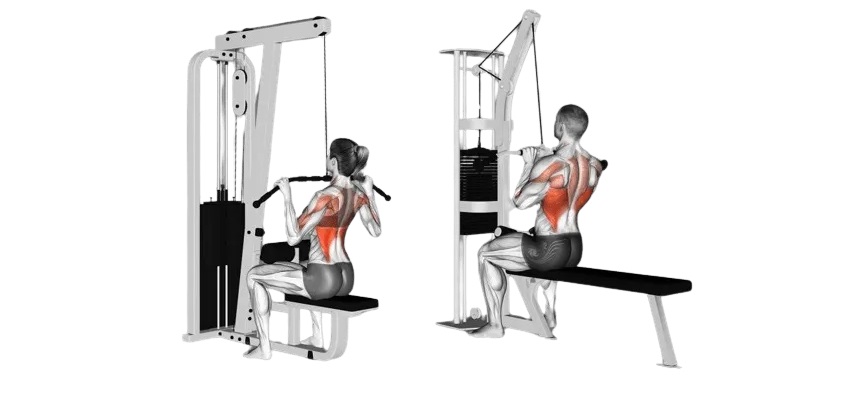Over 12 years coaching clients, I’ve found lat pulldown alternative like pull-ups, dumbbell pullovers, single-arm rows, inverted rows, and straight-arm pulldowns deliver equal results as the lat pulldown. These powerhouse moves all hammer the same critical muscles: your lats, upper back, and biceps, while adding versatility to your training. Let me show you why ditching exclusive lat pulldown reliance built my best back—and can build yours too.
1. Anatomy of the Lats
Before we dive into the lat pulldown alternative exercises, let’s get acquainted with the star of the show: your Latissimus Dorsi (lats). These are the large, fan-shaped muscles spanning from your upper arm (humerus) down your spine to your lower back and pelvis. Think of them as your body’s natural wings! Their main jobs are:
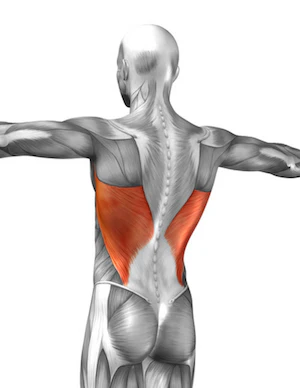
- Pulling your arms down and back towards your body.
- Rotating your arm inward.
- Assisting in breathing.
Strong lats aren’t just about looks; they’re fundamental for posture (fighting that desk slump!), shoulder stability, and powerful movements in sports and daily life. Neglecting them is like building a house without a solid frame. Trust me, I’ve seen the difference in clients who finally target them properly – the change in posture and confidence is real.
2. 9 Lat Pulldown Alternative Exercises
2.1 Pull-ups
- Muscles worked: Lats (Primary!), Biceps, Rear Delts, Rhomboids, Core (seriously!).
- Benefits: This is the ultimate bodyweight lat builder and functional strength test. It directly mimics the pulldown but forces you to control your entire body. Nothing builds lat width and raw pulling power quite like mastering pull-ups.
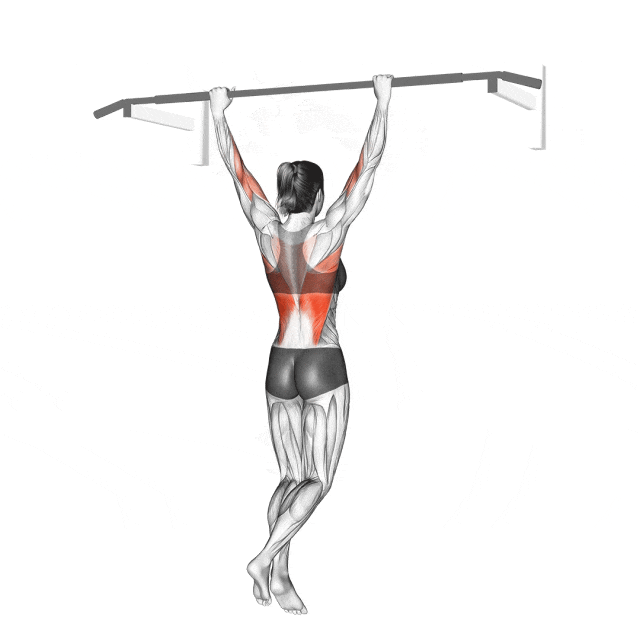
How to do it:
- Grip: Grab the pull-up bar with an overhand grip, hands wider than shoulder-width.
- Start position: Hang with arms fully extended – shoulders relaxed away from ears.
- Initiate: Tighten your core, then squeeze shoulder blades down and back (like tucking them into back pockets).
- Pull: Drive elbows down and back, pulling your chest toward the bar (not your chin!).
- Peak squeeze: Hold for 1 second at the top – chest near the bar.
- Lower: Descend slowly (3-4 seconds) to full arm extension.
2.2 Dumbbell Pullovers
- Muscles worked: Lats (Major stretch!), Chest (Sternal head), Triceps Long Head, Serratus Anterior.
- Benefits: This old-school gem provides an unmatched stretch under load for the lats. It’s fantastic for mind-muscle connection and adding mass through a unique range of motion. Perfect for home gyms too.

How to do it:
- Setup: Lie perpendicular on a bench – only upper back/shoulders supported, feet flat on the floor.
- Grip: Hold one dumbbell vertically by the top end with both hands (palms pressing against the inner plate).
- Start: Press the dumbbell straight up over your chest – slight bend in elbows.
- Lower: Keeping elbows mostly fixed, arc the weight slowly behind your head – feel a deep stretch in your lats.
- Pull: Engage your lats to pull the weight back along the same arc to the start position.
2.3 Straight-Arm Pulldown
- Muscles worked: Lats (Highly Isolated!), Triceps (Long Head), Rear Delts.
- Benefits: This cable move takes your biceps almost completely out of the equation, forcing your lats to do the heavy lifting. It’s phenomenal for learning to feel and contract the lats specifically. Great warm-up or finisher.
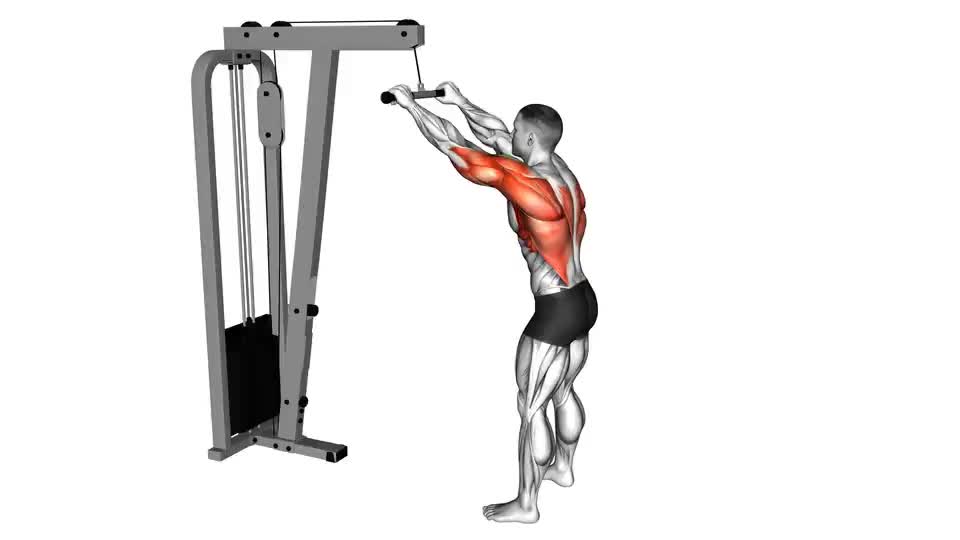
How to do it:
- Setup: Stand facing a high cable machine. Grab a straight bar or rope with an overhand grip (shoulder-width).
- Stance: Step back, lean forward 15-30 degrees at hips, soft knees, core braced, back straight.
- Arms: Keep arms straight with a micro-bend (no elbow lock!).
- Pull: Squeeze lats to pull the bar/handles down in an arc toward your thighs – focus on driving elbows down/back.
- Squeeze: Hold the contraction at the bottom (near thighs) for 1-2 seconds.
- Return: Control the weight back up, allowing lats to fully stretch.
2.4 Single-Arm Cable Pulldown
- Muscles worked: Lats (Focus per side), Core (Anti-rotation), Biceps.
- Benefits: Allows you to hammer each lat individually, perfect for fixing strength imbalances or focusing purely on one side. The standing position engages your core for stability.
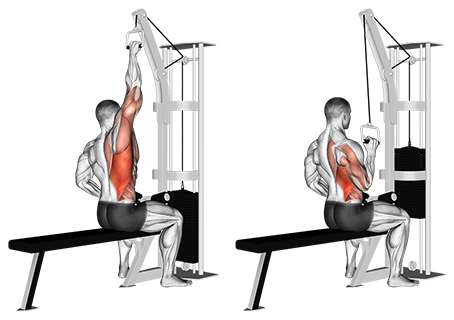
How to do it:
- Setup: Attach a single handle to a high cable. Stand facing it.
- Grip & Stance: Grab handle with one hand. Use a slight split stance (one foot forward) for balance.
- Position: Chest up, core tight, slight forward lean.
- Pull: Pull the handle straight down your side, driving your elbow down and back toward your hip.
- Squeeze: Crush your lat at the bottom (handle near thigh).
- Return: Slowly let the handle rise, resisting torso rotation.
2.5 Single-Arm Dumbbell Rows
- Muscles worked: Lats (Mid/Lower fibers), Rear Delts, Rhomboids, Biceps, Traps.
- Benefits: Allows you to lift heavy with great range of motion. The unilateral nature helps identify and correct imbalances. Excellent for building thickness and raw strength. This is a cornerstone in most of my clients’ back programs – the strength gains translate everywhere.
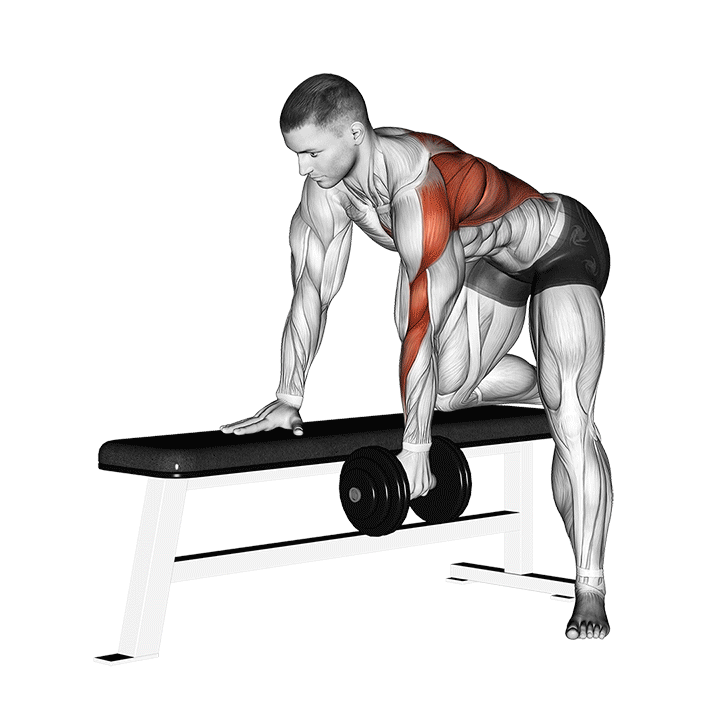
How to do it:
- Setup: Place left knee + left hand on a flat bench. Right foot flat on floor.
- Position: Back flat, parallel to floor. Hold dumbbell in right hand – arm extended.
- Pull: Drive right elbow high and back, pulling dumbbell to your hip. Squeeze shoulder blade.
- Lower: Control the weight down to full stretch – feel the lat lengthen.
- Reps: Complete all reps on one side before switching.
2.6 Inverted Rows
- Muscles worked: Lats, Rhomboids, Rear Delts, Biceps, Core.
- Benefits: Amazing bodyweight alternative scalable for any level. Easily adjusted by changing body angle (more upright = easier). Fantastic for learning the fundamental “pull” pattern safely. Perfect for home workouts (use a sturdy table or Smith machine bar).
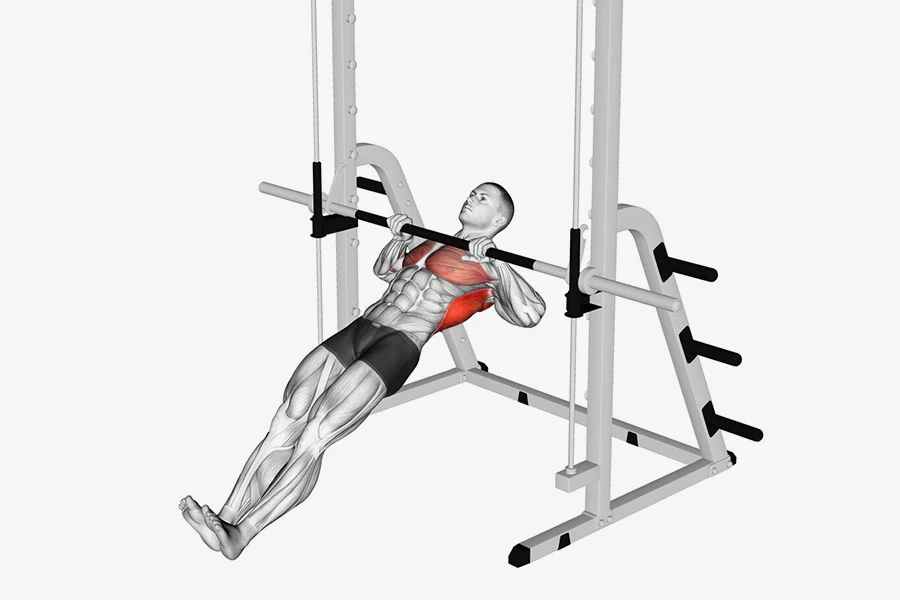
How to do it:
- Setup: Set a barbell in a rack (or use TRX) at hip-to-chest height. Lie underneath it.
- Grip: Grab bar overhand, wider than shoulders.
- Body Position: Walk feet out until body is straight line (heels to head) – core braced!
- Pull: Pull chest to bar by driving elbows down/back – squeeze shoulder blades.
- Lower: Extend arms slowly – maintain rigid body.
2.7 Barbell Row
- Muscles worked: Lats (Upper/Mid), Rhomboids, Traps, Rear Delts, Biceps, Erector Spinae.
- Benefits: The king of back thickness builders. Allows for massive overload. Builds serious strength throughout the entire posterior chain. Non-negotiable for overall back development.

How to do it:
- Setup: Stand over barbell, feet shoulder-width. Hinge at hips, knees slightly bent.
- Grip: Grab bar overhand, just outside knees. Back naturally arched (neutral spine!).
- Pull: Pull bar to lower abdomen/mid-torso – drive elbows up and back.
- Squeeze: Crush shoulder blades together at the top.
- Lower: Lower bar with control – feel stretch in lats.
2.8 Seated Cable Rows
- Muscles worked: Lats (Mid/Lower), Rhomboids, Rear Delts, Traps, Biceps.
- Benefits: Provides constant tension throughout the entire movement. Excellent for targeting the mid-back and building detail. Allows for various grips (V-bar, neutral, wide) to emphasize slightly different areas.

How to do it:
- Setup: Sit at cable row machine. Feet braced, knees slightly bent.
- Grip: Grab attachment (V-bar, straight bar, or handles).
- Posture: Sit tall, chest up, slight arch in low back.
- Initiate: Retract shoulder blades FIRST (pull them together).
- Pull: Bend elbows, row handle to lower abdomen. Squeeze back.
- Return: Extend arms fully, THEN protract shoulders (push them forward) for max stretch.
2.9 Single-Arm Cable Row
- Muscles worked: Lats (Focus per side), Rhomboids, Rear Delts, Core (Anti-rotation).
- Benefits: Fantastic for isolating each side, maximizing contraction, and eliminating cheating. Allows for a great stretch and range of motion. Excellent for focusing purely on the lat contraction without dominant side taking over.
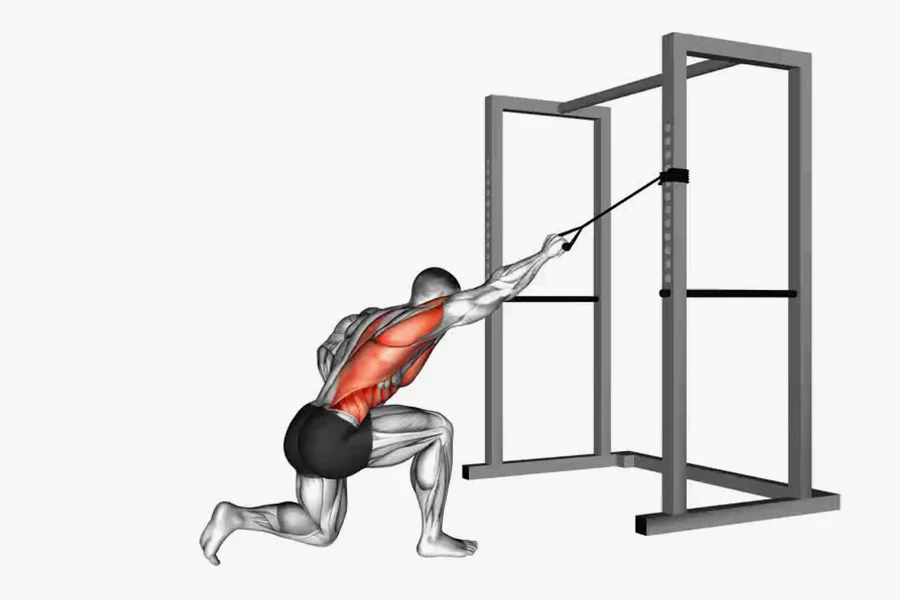
How to do it:
- Setup: Sit at cable machine with single handle. Feet braced wide.
- Grip: Grab handle with one hand.
- Posture: Sit upright, chest proud, core engaged.
- Initiate: Retract shoulder blade (pull it back).
- Pull: Row handle to hip/lower ribs, driving elbow back. Squeeze lat HARD.
- Return: Slowly extend arm, allowing shoulder to stretch forward.
3. Benefits of Lat Pulldown Alternative Exercises
- Enhanced Muscle Activation & Growth: Many alternatives, like Pull-ups and Barbell Rows, often recruit more muscle fibers due to greater stability demands and natural movement patterns. That study I mentioned earlier on chin-ups vs. pulldowns? It highlights how bodyweight exercises can sometimes trigger a stronger neuromuscular response.
- Improved Functional Strength: Life doesn’t happen sitting down strapped to a machine. Pull-ups, rows, and inverted rows translate directly to pulling yourself up, lifting objects, and maintaining posture in the real world. The strength you build carries over.
- Better Mind-Muscle Connection: Unilateral exercises (Single-Arm Rows, Pulldowns) force you to focus intensely on one side, dramatically improving your ability to feel and contract the lats. This skill is gold for growth.
- Addressing Muscle Imbalances: Focusing on one side at a time helps identify and correct strength and size discrepancies between your left and right sides, leading to better symmetry and reducing injury risk. I catch imbalances in clients all the time with single-arm work.
- Improved Core Stability & Posture: Exercises like Single-Arm Rows, Barbell Rows, and Inverted Rows demand significant core engagement to maintain proper form. This builds a stronger, more stable midsection and reinforces good posture habits – crucial in our desk-bound world.
- Shoulder Health & Mobility: Exercises like Dumbbell Pullovers and Straight-Arm Pulldowns promote healthy shoulder extension and mobility, counteracting the forward hunch. Properly executed rows also strengthen the crucial muscles supporting the shoulder blades.
Building an incredible back takes consistent effort with the right tools. These 9 lat pulldown alternative are your proven toolkit. Now go engage those lats! Your wings are waiting to spread.
Welcome! I’m Jordan Mitchell, the dedicated editor at Leadman Fitness, where we specialize in manufacturing high-quality bumper plates, barbells, weight machines, kettlebells, and dumbbells. With a passion for fitness and a keen eye for detail, I ensure that our product information is clear, accurate, and engaging for our customers. My role involves collaborating closely with our design and production teams to highlight the innovative features and superior craftsmanship that set Leadman Fitness apart in the industry. Whether you’re a professional athlete or a fitness enthusiast, I’m here to provide you with the information you need to achieve your training goals with our top-of-the-line equipment.
